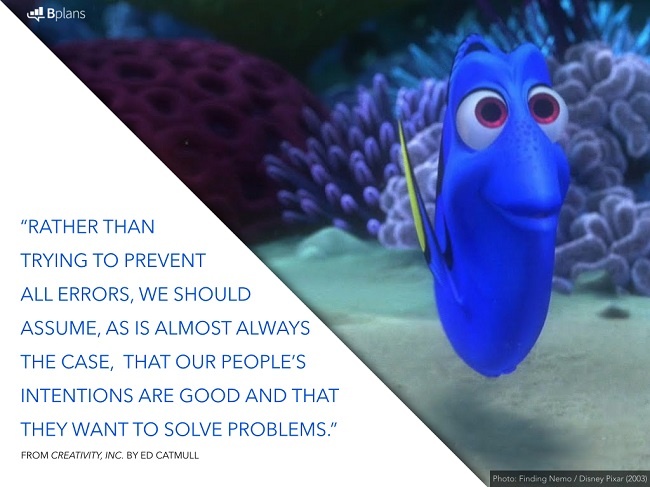
Change is inevitable. Sooner or later, every business will find that something isn’t the way it was when it started out - competition changes, organisational culture evolves and innovation is constantly shifting the goalposts in all industries. Your company faces a simple choice: adapt or fail.
Every business can adapt - but many choose not to. Change management is a skill and a mindset that every business has to develop if it wants to survive in the long term. Whatever it is you need to change - your pricing, your marketing, your supply chain, your organisation or your values - you’ll need a business culture that embraces change.
Here’s how to build one.
Accept you have to change
Matthew Olson and Derek van Bever - authors of Stall Points - claim no business can grow forever. Once a major stalling point - a shortage of people, a misreading of markets, or a plateau in sales of the core product - is reached, Olson and Bever calculate only a 10% chance of the business’ growth rate fully recovering. Even major players in their fields - Levi Strauss, Apple, Toys R Us and Volvo - accelerate into stalls when their process reaches the natural limit of its success.
The only way to handle these stall points is to be prepared. Instead of turning your company around after a stall, be ready for when one comes - ready to recruit, rebrand, or reposition around a new offering.
Of course, you can’t plan for everything. Sometimes the forces that change your business are unexpected. The trick is in not trying to plan for everything, but instead building a business that can respond to anything.
Challenge your business - all the time
The first step in change management is knowing what sort of changes are likely; the second is having an idea of how to deal with them.
Carol Roth - entrepreneur, former investment banker and ‘tough love’ business advisor - tells us to expect the unexpected, right up to building catching fire or your entire team being laid up in an epidemic.
Don’t wait until a crisis comes along and shakes your business up. Do your own shaking and you’ll be ready when necessity forces you to adapt. At every meeting, ask your board, your mentor and your colleagues one question: “How would you disrupt our market?”
This question’s based on the premise that business models are always evolving, and the best way to handle that evolution is to instigate and control it, by making the most of your existing resources. To stimulate helpful answers, you can ask follow-up questions:
- “What would we do if we were starting from scratch?”
- “What would we do to compete with ourselves?”
- “If we wanted to offer something else with our skills and resources, what could it be?”
- “If we wanted to serve different customers, how would we find them?”
These aren’t purely hypothetical questions. They’re asked to highlight possibilities which your colleagues might not have discovered in the course of doing business as usual. They highlight new opportunities and new offerings, weaknesses in the business as it stands, and ways to reinvent how your customers can discover and do business with you.
This flow of ideas will ensure you have something on the table when a stall point looms ahead. But ideas are useless unless you can act on them.
Build a creative culture
It’s one thing to have been in business for twenty, or fifty, or a hundred years. It’s another to have been going for three years and grown 200% per annum while you’re at it.
Modern businesses, including high-growth startup success stories, are agile; prepared to deconstruct, reorganise, reframe and reinvent so they can go where the growth is.
Pixar president Ed Catmull and co-author Amy Wallace literally wrote the book on change management and business architecture. In Creativity, Inc., they offer dozens of principles for developing and maintaining a creative, agile, problem-solving company. Even businesses outside the creative industries benefit from a candid sharing of ideas, opinions and criticisms, or a refusal to let fear of making mistakes stop them doing something new. Here’s the golden one though:

It’s rare for an employee to be trying for failure. In the vast majority of cases, your people want to solve problems, so give them some latitude. Rather than micro-managing every change so that it fits your vision, tell people the direction you plan to take, invite their input on how to get there, find out what they would change about day-to-day operations, and - if you can - let them try it.
This also gives you the insight you need to reflect. Nobody’s plans are 100% perfect. Every major project of change should have a review stage built in, so that - successful or otherwise - you’ll know what could go wrong with the next one.
To wrap up, we’re going to restate that crucial starting point: no business grows forever. No matter how great your business model is, there’ll be a limit to its success - a stall point waiting ahead. There’ll be shifts in the market, in client and consumer priorities, or in the technology your industry uses.
To keep growing, you have to accept that change is inevitable, and build a business that’s capable of changing. Challenge yourself constantly. Ask your team how they would disrupt the market to destroy your business, if they were its competitors. Ask them what they’d change about the day to day operations, and what they’d offer your market if they were in your shoes. That communication builds a culture where change is accepted, not imposed - and that culture builds a business that’s ready to grow.
To find out more about the business model and the three other key cornerstones required for growth, download our latest guide 'Going for Growth':

